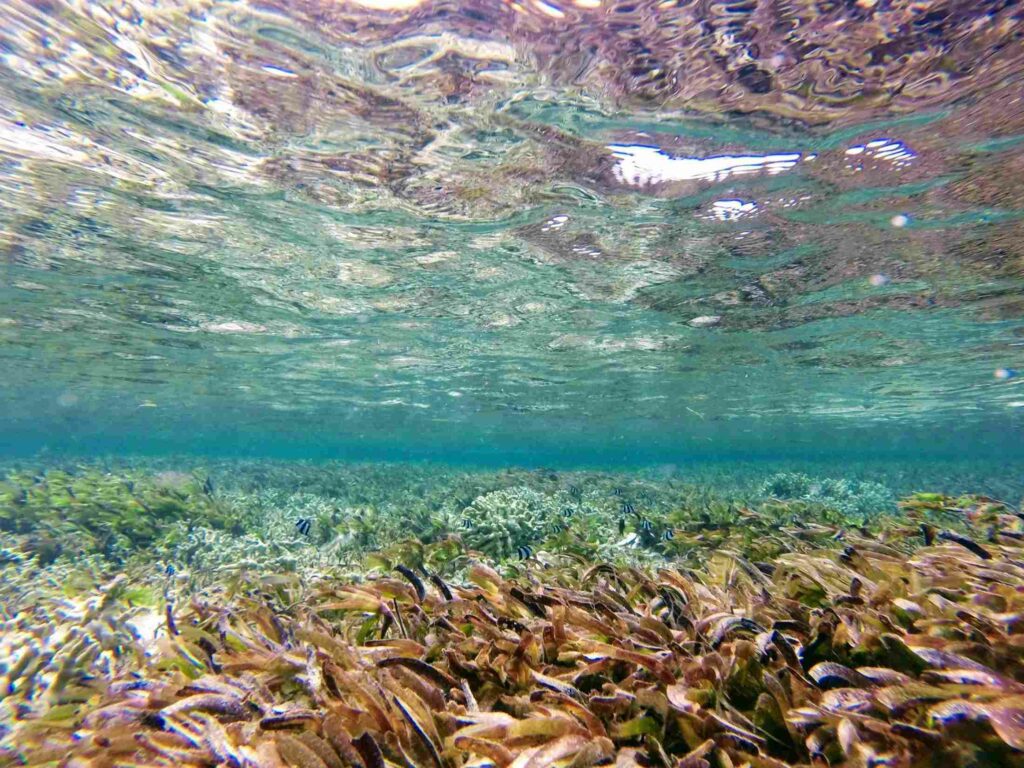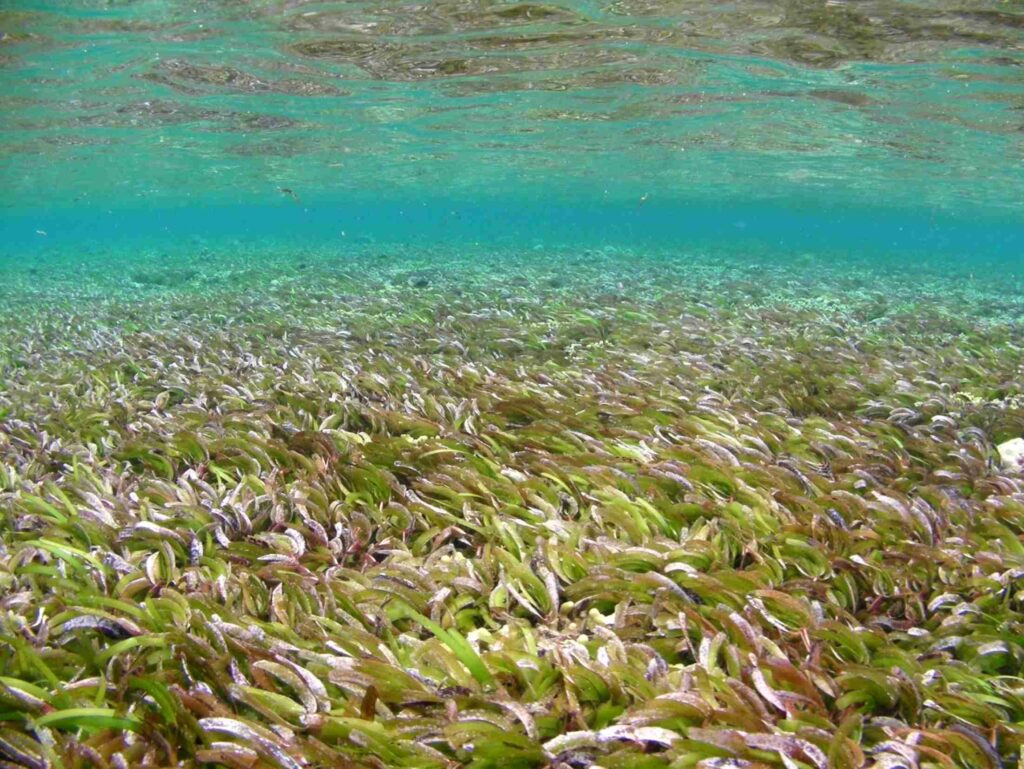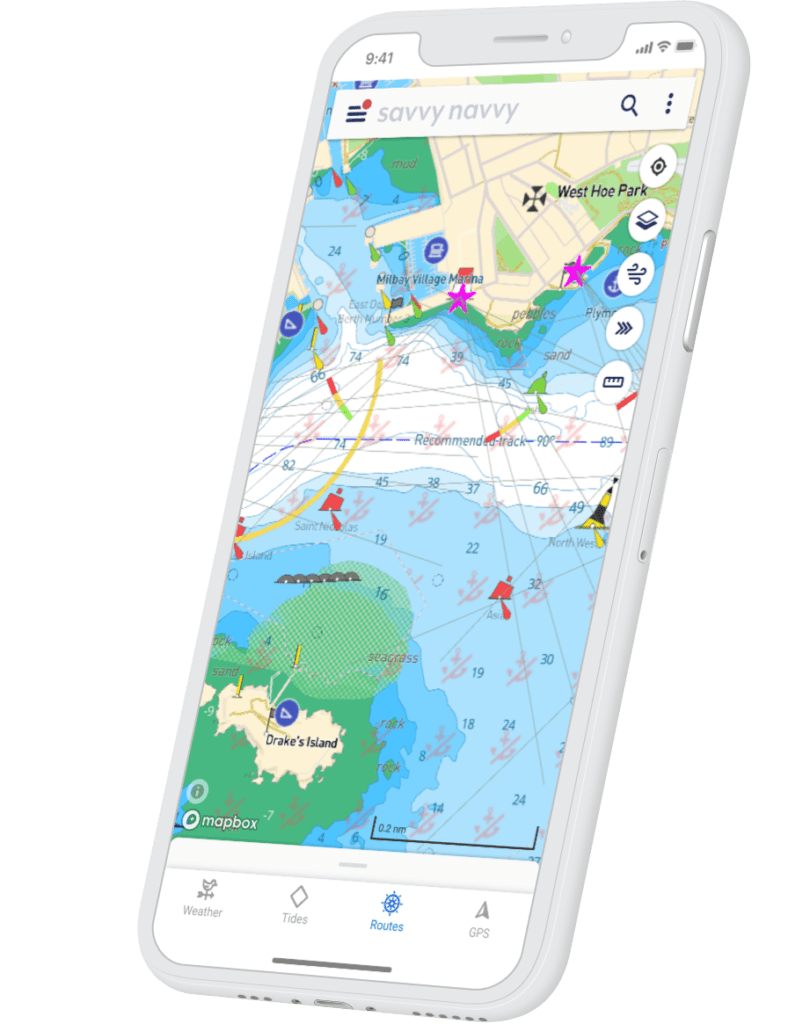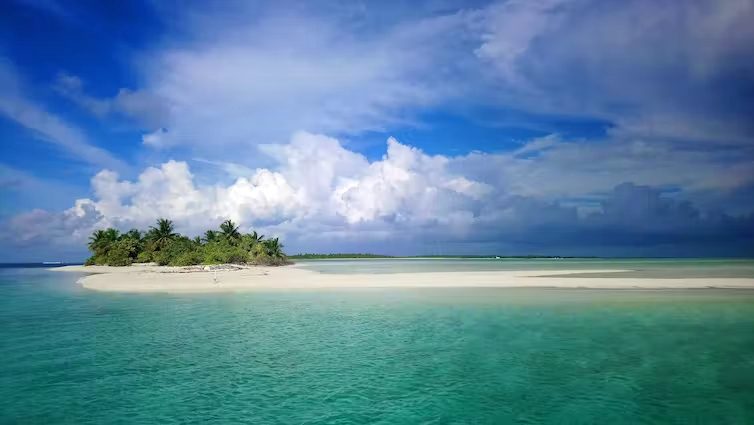In prime dive locations such as the Maldives, seagrass is often removed from tourist resorts to meet visitor expectations of pristine white sands. But this is a misconception of what shallow waters around tropical islands should look like, according to a new UK study, depriving visitors of the schools of baby fish, seahorses and turtles drawn to seagrass habitats.
More importantly, tropical seagrass meadows are “sand factories” that have the ability to protect coral-reef islands from the threat of sea-level rise, say the researchers at Northumbria University, Newcastle who produced the paper.
Physical geography lecturer Holly East and research assistant Jamie Johnson say they have discovered that the ability of seagrass to build and maintain coral-reef islands provides another reason beyond carbon capture to safeguard the world’s remaining meadows.
The breakdown of the shells and skeletons of organisms living on coral reefs has produced enough sand to form entire islands throughout the tropics, and these are inhabited by more than 700,000 people globally, in nations including the Maldives, the Marshall Islands and Kiribati.
“Our research showed that seagrass meadows can make the right type of sand for building and maintaining the shorelines of these islands,” say the scientists, who are both scuba divers but needed only to snorkel for the purpose of the study. “This sand could help protect them from sea-level rise, which threatens the existence of low-lying nations.”
Divers who stop to scrutinise seagrass leaves can see what look like white grains of sand adhering to them. Under a microscope these are revealed as tiny plants and animals – calcium-carbonate epibionts that can include sea snails, single-celled foraminifera, crusts of coralline algae and colonies of bryozoans.
As epibionts fall off or are carried away as seagrass dies, it accumulates with other sediment, helping to build and maintain island shorelines.
Huvadhoo Atoll

The study determined how much sand was being produced by organisms living in a seagrass meadow in Huvadhoo Atoll in the southern Maldives, where rising sea temperatures have caused reefs to bleach in recent years.
Satellite images were used to map the seagrass density and 27,528 individual leaves had to be counted – “not how most visitors to the Maldives spend their trip!” East and Johnson acknowledged.
Analysing 400 leaves in the laboratory revealed the mass of epibionts living on them, and from sand samples the researchers calculated how many would be suitably sized for island-building.
Across the 1.1sq km of seagrass meadow studied, sediment production was 762 tonnes a year – with 482 tonnes being the right size. Across the entire meadow, this would be enough to build the neighbouring island of Faathihutta in only 18 years.
“Not all of this sand will go on to build islands – some will remain in the ocean,” say the researchers. “Nonetheless, this is a huge volume of sand being produced near islands in desperate need of sediment to bolster shorelines threatened by rising seas.”
The finding underlines the importance of protecting and restoring already-damaged seagrass meadows, as well as ensuring that the sand’s movement is not hampered by man-made obstructions such as seawalls. The study is published in Nature.

Mapping seagrass for UK boaters
Meanwhile in the UK a new seagrass-protection partnership has been formed between the Ocean Conservation Trust (OCT), boating conservation body Clean Sailors and savvy navvy, a boat-navigation app.
Through the new #ProtectOurBeds campaign, app-users will be able to see the location of sensitive seagrass habitats, as well as the advanced mooring systems that can prevent anchor-chain being dragged across the seabed.
“The Ocean Conservation Trust has been working with the boating community to conserve nature for the past decade, so we are delighted to be the conservation lead in this project,” said Mark Parry, the trust’s head of ocean habitat restoration.
“The addition of sensitive habitat information on savvy navvy navigational charts is the first time the boating community can easily understand what lies beneath the keel. Seagrass habitats are biodiversity hotspots and in decline from multiple pressures, so providing this information to the conscientious boater is a significant step forward in the recovery of this vital ocean habitat.”

Seagrasses can be up to 35 times more efficient at absorbing carbon than rainforests of the same area, says OCT, a UK-based organisation that focuses on habitat restoration and behaviour change.
Despite covering only 0.2% of the seabed, seagrass stores 10% of the ocean’s carbon. It also provides a habitat for rare and endangered species, with a single hectare capable of supporting up to 80,000 fish and 100 million small invertebrates.
The UK has lost nearly half of its seagrass beds since the 1930s, mainly due to avoidable human activity – in particular the anchoring of boats. Advanced mooring systems can mitigate this by using a series of midwater floats to keep chain from dragging across the seabed.
The #ProtectOurBeds campaign is now seeking data partners across Europe and the USA for the next stage in the project.
Also on Divernet: Seagrass Project Gets Going In Cornwall, Seagrass Lifts ‘Blue Carbon’ Hopes In Cornwall, Shark ‘Eyes’ Reveal Biggest Blue CO2 Trap, World’s Biggest Plant Revealed in Shark Bay, Divers Shift Seagrass Seeds And Nets, We Should Fight To Protect UK Seagrass

